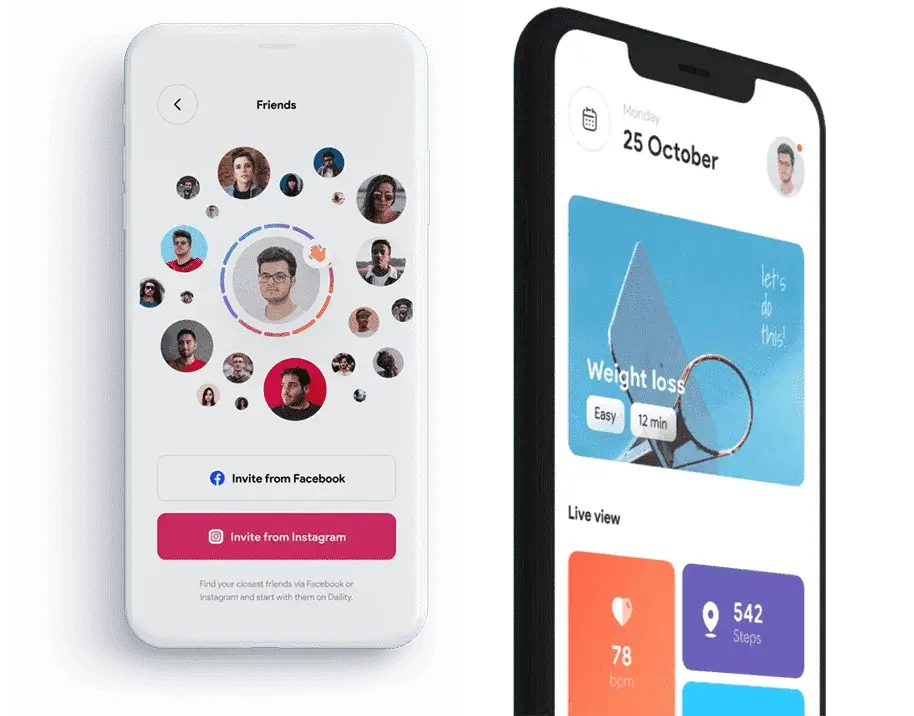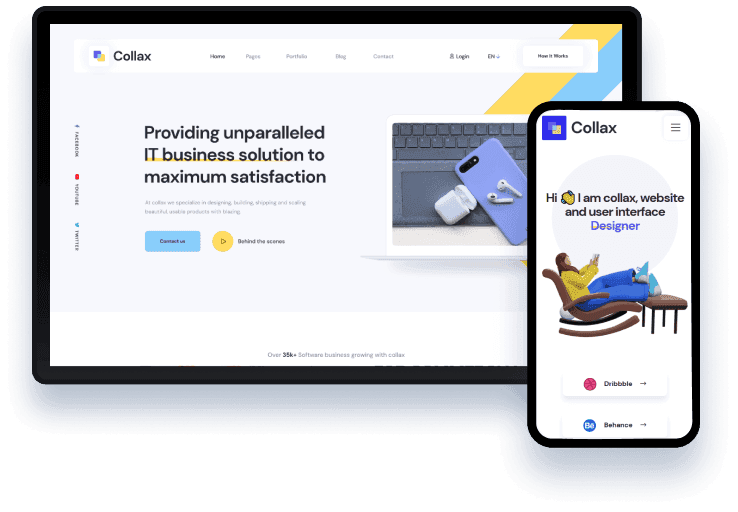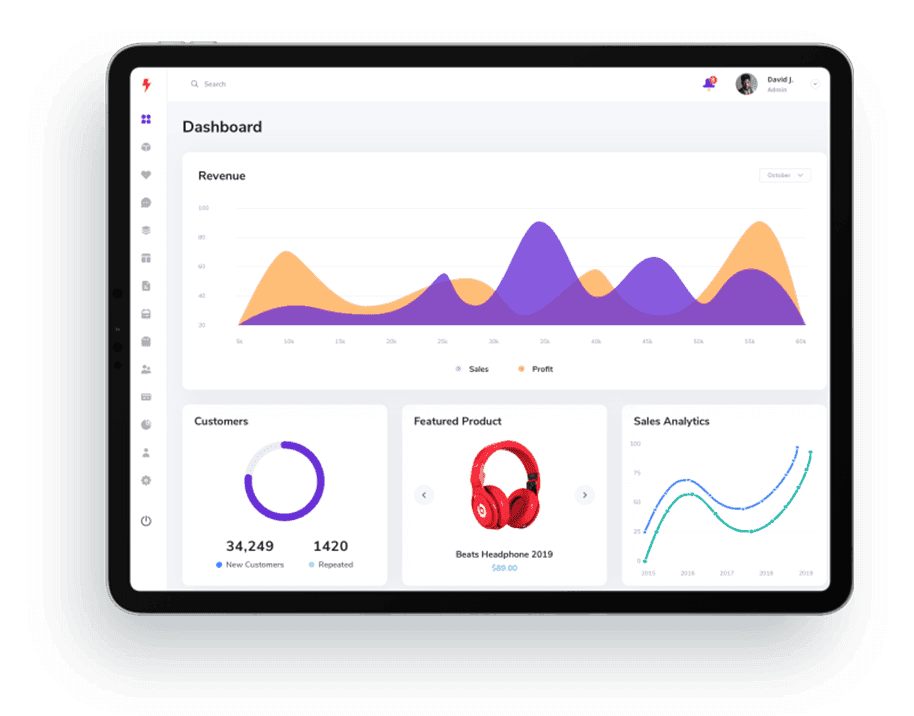Building a Brand Through Your Website
In today's digital-first world, your website is the cornerstone of your brand's online identity. It's no longer just an informational tool for potential customers but a powerful platform that reflects your brand's essence, values, and mission. A strong, well-crafted website can build credibility, create engagement, and, most importantly, communicate the unique story that makes your brand stand out.
Here's how you can build and strengthen your brand through your website.
1) Define Your Brand Identity
Before you dive into the design and content of your website, you need to have a clear understanding of what your brand stands for. A strong brand identity resonates with your target audience and differentiates you from your competitors.
To effectively communicate this, begin by defining:
Mission and Vision: What is the purpose behind your brand? What do you aim to achieve in the long term? Having a strong mission and vision helps convey your brand's deeper purpose and direction.
Core Values: What principles guide your brand's actions? Core values create a deeper connection with your audience, shaping their perception of who you are and why they should engage with you.
Unique Selling Points (USP): What makes your brand stand out in a crowded market? Identifying your USP is essential in setting yourself apart from competitors and positioning yourself as a leader in your industry.
2) Consistent Visual Branding
The visual elements of your website are some of the first things visitors will notice. Consistent and professional design reinforces your brand identity and creates a lasting impression.
To achieve this, focus on:
Logo: Your logo should be prominently displayed and act as a visual representation of your brand. It should be memorable and easily recognizable.
Color Scheme: Colors evoke emotion. Choose a consistent color palette that reflects your brand's personality and resonates with your audience. These colors should be applied across all web pages to maintain consistency.
Typography: The fonts you choose should align with your brand's voice - whether it's modern, classic, playful, or serious. Typography is a subtle yet powerful way to communicate your brand's personality.
Imagery: High-quality images and graphics are essential. These visuals should reflect your brand's style and tone, helping to further communicate your message.
3) Compelling Content
Content is the heart of your website and plays a crucial role in building your brand. Great content engages, informs, and converts visitors into customers. Ensure your content includes:
Homepage: This is your first impression. Craft a compelling headline and subheadline that clearly communicate what your brand offers and why visitors should care.
About Us Page: Your brand story is an opportunity to connect with visitors. Share your journey, mission, and values. Include insights into your team to humanize your brand.
Blog: Regular blog posts help position your brand as an industry thought leader. They should reflect your expertise, voice, and values while offering useful content to your audience.
Product/Service Pages: These pages should clearly describe what you offer, highlighting how your products or services solve your customers problems. Be sure to emphasize what makes your offerings unique.
4) User Experience (UX)
Your website's design must make it easy for visitors to find what they are looking for, all while offering a smooth, enjoyable experience. Positive user experiences help build trust and increase conversion rates. Key aspects of good UX include:
Navigation: Your website should be easy to navigate, with a well-organized menu and clear pathways to different sections.
Loading Speed: Fast loading times are crucial for retaining visitors. Optimize your website to load quickly to avoid losing potential customers.
Mobile Optimization: With mobile devices accounting for a significant portion of internet traffic, your website must be responsive and function seamlessly across all devices.
Interactive Elements: Engage your visitors with interactive elements such as contact forms, chatbots, and social media integration. These features make the experience more personalized and engaging.
5) Building Trust and Credibility
Trust is the foundation of any successful brand, and your website should be designed to instill confidence in your audience. Here is how to build credibility:
Testimonials and Reviews: Display customer testimonials and reviews prominently on your website. Positive feedback from real customers helps build trust.
Case Studies: Showcase case studies that demonstrate your brand's success stories. Highlight your solutions and how they have made a difference for clients.
Certifications and Awards: If your brand has received any certifications or awards, make sure to display them. These accolades add credibility and show that your brand is recognized by industry leaders.
Privacy Policy: A clear and accessible privacy policy reassures visitors that their data is being handled securely, which is critical in building trust.
6) Call to Action (CTA)
A well-crafted CTA is essential for guiding visitors toward taking the next step in their journey with your brand. Your CTAs should be:
Straightforward: Use clear, actionable language that tells visitors exactly what you want them to do (eg: Sign Up, Learn More, Contact Us).
Visually Prominent: Make sure your CTAs stand out on the page. Use contrasting colors and clear buttons to draw attention.
Value-Oriented: Highlight the benefits of taking action. Make it clear what value visitors will gain by clicking the CTA (eg:Get a Free Consultation, Download the eBook).
7) Consistency Across Channels
While your website is the hub of your online brand, it's important that your brand's identity is consistent across all channels. Ensure uniformity across:
Social Media: Your social media profiles should reflect the same branding as your website. Use consistent colors, fonts, and messaging to reinforce your brand identity.
Email Marketing: Ensure your email campaigns mirror the design and tone of your website. A consistent look and feel across emails help strengthen brand recognition.
Offline Materials: Any print materials, advertisements, or promotional items should align with your website's branding. Consistency across online and offline channels builds a cohesive brand image.
8) Monitoring and Iterating
Building a strong brand through your website is an ongoing process. Monitor performance using analytics tools and feedback to ensure your website is continuously meeting user needs. Regularly updating your content and design will keep your website fresh and relevant, helping to maintain and grow your brand's digital presence.
Ready to build your brand online?
Your website is more than just a digital presence; it's an extension of your brand's identity. As a leading web design company, we specialize in crafting visually stunning websites that perfectly reflect your brand. Our web development company ensures that your website is built with the latest technologies, offering seamless functionality and optimal user experience. Let us help you create a website that attracts customers, strengthens your brand, and grows your business. Explore our services and start building your brand today!
By Digital Team. Updated on 19-07-2024
branding website design website development digital marketing website development web development company web design web designer in dubai web design dubai brand development
02-08-2025
Bulk Email: How Email Helps Ensure Delivery?
05-05-2025






